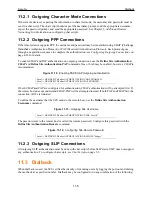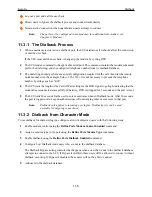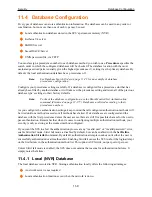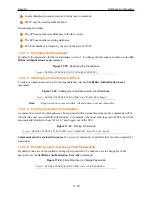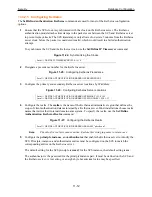
Security
Database Configuration
11-15
3
The RADIUS authentication server decrypts the Access-Request packet and routes it to the
appropriate security checking mechanism, such as a UNIX password file or Kerberos database. Based
on the information returned from the security check, one of the following occurs:
A
If authentication is successful, the server sends an authentication acknowledgement (Access-
Accept) packet to the SCS. The packet may contain additional information about the user’s
network system and connection requirements, such as the type of connection required and
filtering information. The user is connected to a site or destination node if appropriate.
Note:
See Appendix D, Supported RADIUS Attributes, for more information about
using filters with RADIUS.
B
If authentication fails, the server sends an Access-Reject packet to the SCS. The SCS will move
on to the authentication method at the next precedence level, or terminate the connection if all
methods have been tried.
C
The server may be configured to send a challenge to the user after attempting to log in. If this is
the case, the SCS will print the server’s challenge and prompt the user to enter a response. The
user must respond to the challenge, at which time step 3 is repeated using the response in place
of the password in the Access-Request Packet.
Note:
In order to respond to the challenge, the user must be in character mode which
precludes the use of PAP or CHAP for authenticating the user. See RADIUS and
Sites on page 11-16.
To configure the SCS for RADIUS authentication, use the
Set/Define Authentication RADIUS
commands.
Figure 11-30:
Configuring the SCS to use RADIUS Authentication
In the example above, the third command tells the SCS to use port 1620 on the secondary RADIUS
authentication server rather than the default RADIUS authentication port (port 1812).
Note:
See Set/Define Authentication RADIUS on page 12-157 for complete syntax and
information.
The secret string configured for the SCS must match that of the RADIUS server being used for
authentication.
Figure 11-31:
Configuring the RADIUS Server
For security reasons, it is recommended that you choose a secret string of at least 16 characters containing
no obvious or easily-guessable items (such as names, phone numbers, or words that can be found in a
dictionary).
Local>> DEFINE AUTHENTICATION RADIUS PRECEDENCE 5
Local>> DEFINE AUTHENTICATION RADIUS PRIMARY 192.0.1.77
Local>> DEFINE AUTHENTICATION RADIUS SECONDARY 192.0.1.78 PORT 1620
Local>> DEFINE AUTHENTICATION RADIUS SECRET "ok829dsnva1843qx"
Содержание SCS
Страница 14: ...xii ...
Страница 171: ...Modem Sharing Examples 10 6 ...
Страница 314: ...Command Reference Service Commands 12 110 ...
Страница 403: ...Show 802 11 Errors Rightmost Number B 5 00000002 Internal error 00000001 Internal error ...
Страница 424: ...Index 13 ...





